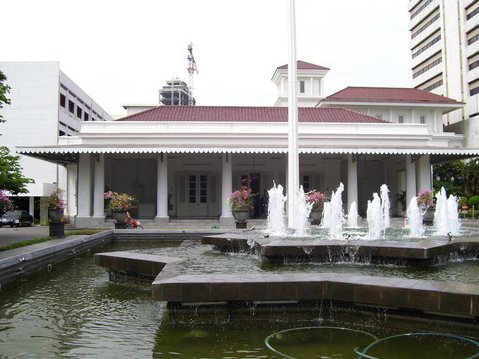
"The Facts Behind Jakarta City Hall Complex"
Jakarta City Hall building which now becomes Governor Basuki Tjahaja Purnama’s office has a long history. Not all of the governors who had served ever work here. This Dutch colonial heritage building is a silent witness of Jakarta’s government. Let’s see the 8 facts about it on this article!
1. Before occupying the building that now located in the central part of Jakarta, Jakarta’s government office had moved several times from one place to another. Starting from De Oude Stadhuis in 1905 which now known as the Fatahillah Museum, then moved to Tanah Abang West in 1913 which now Jl. Abdul Muis No. 35, to finally the today’s occupied building at Jl. Medan Merdeka Selatan No. 8-9.
2. First, at the Dutch colonialism era, the City Hall was named Gemeente Batavia. Then when the Japan took over the rule in 1942-1945, the ownership of this building also shifted and got its name changed into Djakarta Tokubetsu Shi. After the Independence Day, this government office changed the name again to Balai Agung Pemerintahan Nasional Kota Djakarta with Governor Soewirjo as the first governor.
3. Because of the upheaval from the Dutch that hadn’t admitted Indonesia’s independence at that moment, Soewirjo and other officials were arrested and expelled from the municipality until the government is back to Dutch’s hand with the name of Stad Gemeente Djakarta that was used until they admitted the independence on December 27, 1949.
4. In the era of Sumarno as the Jakarta’s governor in 1960, Jakarta got a special status with the same level as Daerah Swatantra Tingkat I (special region). This made Jakarta’s government changed again from Kotapraja Djakarta Raja to Daerah Chusus Ibu Kota (DCI) Djakarta. Which now we all know as DKI Jakarta after the spelling got enhanced.
5. Since 1969, this complex keeps developing with constructing more buildings which are used to various needs such as court room and workspace that is divided into a few blocks.
6. In 1972, Jakarta’s Government built a new 24-story building which is now known as the name of Gedung Blok G. The building also became an example of project for skyscraper buildings in Jakarta.
7. Still in 1972, this complex expanded to Jalan Kebon Sirih area. The new buildings are Gedung Blok H for Department of Revenue and Regional Cash, also Gedung Blok D and Blok F for Offices and Office Facilities such as bank and fire brigade.
8. Until the year of 1982, Jakarta’s Government built Regional House of Representative which facing Jalan Kebon Sirih that still can be seen until now.













